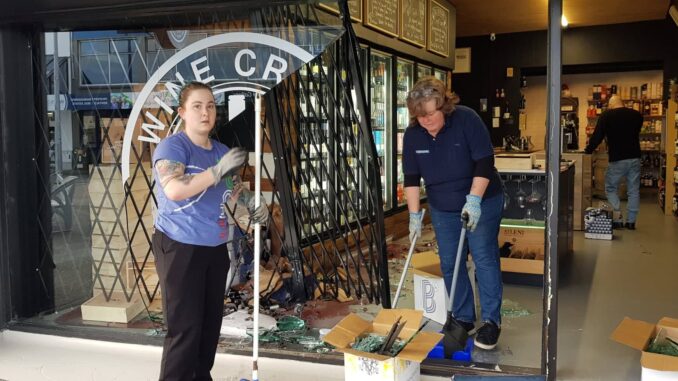
When Kāpiti was hit with a series of Ram Raids late last year there was a public outcry and a call for harsher penalties as a deterrent and at the same time calls for dealing with the underlying causes. So everything to lockem up and throw away the key to the poor darlings are just misunderstood was heard.
All of this has played out in recent legislation and the reaction to it.
The government has announced a new criminal offence targeting ram-raiding, carrying a maximum 10-year sentence. Legislation is currently before Parliament.
Prime Minister Chris Hipkins says there had been an increase in retail crime, including ram-raid offending and smash and grabs, over the past few years.
“This has been of significant concern to the community and it’s been of significant concern to the government. We acknowledge that many of the people involved in this type of offending are young people, including children as young as 12 and 13,” Hipkins says.
“We have been failing as a country to deal with the youth offending that we are now seeing and we need to do more. We have also been failing the victims of these offences and we need to do more.”
Hipkins says there were too many people now afraid to go to work or afraid to live in their homes – if the homes were attached to their work – because of this type of offending.
“The government has been taking serious action over the last year to address this type of offending, recognising that many of the people in the offending are children and young people,” Hipkins says.
“We’ve been conscious to take a different approach, one that seeks to break the cycle of offending and set up opportunities for a life outside of crime for these kids.”
Programmes put in place last year aiming to better re-engage these children with educational training or employment, and better connect them to their local communities, have produced “some significant successes”, Hipkins says.
“They are working for around three quarters of the young people who have been referred to them. However, that does leave around a quarter of repeat offenders who are creating and perpetuating the problem.
“We clearly need to do more for the quarter who are going on to reoffend.”
The announcement was the “final piece of the puzzle”, he said.
A maximum 10-year sentence for the new offence was the same for burglary, he said, reflecting “the serious nature of the offence.
“The change that we are making recognises the magnitude and the impact that ram-raids are having in our communities, especially the impact that those repeat offenders are having. It also sends a clear message to young offenders there is consequences for their actions.”
This was not about sending children to prison, Hipkins said.
“The new offence will not be the first port of call for first-time ram-raiders. This is for the worst repeat offenders, recognising that those early interventions simply haven’t been working for that group.
“We can’t just sit back and wait until these kids are old enough to actually escalate the response.”
Hipkins and Children’s Minister Kelvin Davis also revealed a law and order policy concerning young offenders, announcing the government would build two new youth justice units.
The units would cater for to up to 30 higher-needs youth, Hipkins says.
Meanwhile Auckland University criminologist Dr Ronald Kramar says the government is following the polls, not the evidence, in its new hard-line strategy for young ram-raiders.
With Smash and grabs becoming a new criminal offence the move has been roundly criticised from both the left and right of politics and now those with expertise in the area have weighed in.
Dr Kramar says the policy might be tough on crime but it did not make sense.
“It’s the same story over and over again. Does anybody seriously think that these proposals are going to crack these tough nuts? So much evidence shows that these punitive interventions make people worse.”
Dr Kramar put the government’s policy down to a “knee jerk reaction” to look tough on crime in an election year.
Police Association president Chris Cahill says the new offence for ram-raids helps with the recording of the number of those offences but the reality is, it’s a burglary.
“So I’m not sure it achieves a lot beyond the superficial nature of naming a particular type of burglary.”
Sunny Kaushal, speaking for many small retailers, says many businesses and families had been destroyed by a “plague of ram-raids” that could have been stopped years ago.
“It’s disappointing the changes were not introduced when Chris Hipkins was the police minister and it was obvious to all New Zealanders that kids were committing crime with impunity.
“I have been personally saying a tsunami of crime was coming for over six years now. We have been ignored until the crime emergency became a political emergency,” says Mr Kaushal.
All of this is probably of little consolation to those Kāpiti retailers who were the victims of ram raids. The popular Mobil station in Waikanae was hit by ram-raiders which followed on from similar attacks in Ōtaki, Paekākāriki, and Paraparaumu Beach. Bollards have since been added to many premises as a means of self protection.





